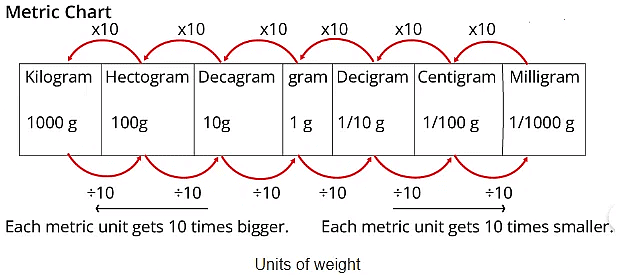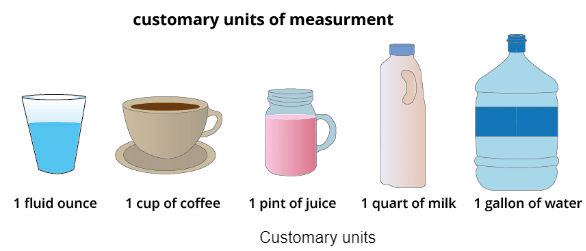Capacity Chapter Notes | Mathematics Olympiad Class 4 PDF Download
| Table of contents |

|
| Introduction |

|
| What is Measurement? |

|
| Measurement of Length |

|
| Measurement of Weight |

|
| How To Measure Weight |

|
| Measurement of Capacity |

|
| Measurement of Time |

|
| Measurement of Area |

|
Introduction
Welcome to this chapter where we'll delve into the realm of capacity & measurement. Here, we'll learn about how we measurement, understand volume concepts, and explore the tools and units used for capacity & measurement. Let's begin this insightful exploration together.
What is Measurement?
Measurement is the numeric value with certain units of measurement. We can measure length, weight, speed , temperature and capacity of a given object with a certain unit and numeric value. We can use standard as well as common units to measure something. E.g To measure time we can use hours, minutes and seconds.

Measurement of Length
Length is measured the distance between two points or place, it can be measured in metre (m), centimetre and kilometre.

The metre(m) is equally divided into 100 equal parts, each part known as centimetre or in short (cm).
1 m = 100 cm
And 100 cm = 1 m
For Measuring distance between place or city we use kilometre, the kilometre is equally divided into 1000 parts each part as metre (m).
So we can say,
1000 m = 1 km
Or
1 km = 1000 m
The Relationship Between Different Units of Length.
- 1 centimetre (cm) = 10 millimetres (mm)
- 1 decimeter (dm) = 10 centimetres (cm)
- 1 metre (m) = 10 decimeters (dm)
- 1 decameter =10 metres (m)
- 1 hectometer = 100 metres (m)
- 1 kilometre = 1000 metres (m)
Measurement of Weight
To measure the weight or mass of the different types of object we can use kilogram in short (kg), gram (gm) and milligram (mg), depending upon the size of the object for small size object we can use milligram or gram and for large size object we will use kilogram (kg). The SI unit of weight is kilogram (kg).

How To Measure Weight
There are different types of weight scales we can use to measure the weight of an object.
1. By using Balance equality measures.

Here we have put the potato on one side of the balance and 2 kg of metal on the other side of the balance. If both sides are balanced, then we can say the potato weight is 2 kg.
2. By using an electronic weighing machine.

In this machine we keep the object on the machine plane surface and the weight object will show on a small screen. Here we can measure the weight of objects in different units.
Different Types of Unit to Measure The Weight of an Object And Their Relation With Standard Units.
- 1 decagram = 10 grams
- 1 hectogram = 100 grams
- 1 kilogram = 1000 grams
- 1 decigram = 0.1 gram
- 1 centigram = 0.01 gram
- 1 milligram = 0.001 gram

Measurement of Capacity
To measure the capacity or volume of any container can contain we use litre and millilitre. In short we use l for litres and ml for millilitres.
The capacity of an object can be measured by two methods:
- Customary Units
- Metric units.
1. Customary units
There are five customary units to measure the capacity or volume of any object.

Relation between different unitsunit of customary units
- 1 cup = 8 fluid ounces
- 1 point = 16 fluid ounces
- 1 quart = 32 fluid ounces
- 1 gallon = 128 fluid ounces
2. Metric units
To measure the capacity of any object in a metric unit we use litre, millilitres and kiloliter.
Relation between different units of Metric units
1 litre(l) = 1000 millilitres (ml)
1 kiloliter(kl) = 1000 litre (l)
Measurement of Time
- Time is measured in different units like hours, minutes, and seconds.
- Time can be measured in various ways like in seconds and minutes which are relatively small units whereas years and decades are relatively large units of time.
Measurement of Area
The amount covered by the surface of any two-dimensional shape is known as the area. It is also known as the surface covered by the border. The area is measured in square units. It is measured in the square of length units.
|
32 videos|39 docs|46 tests
|
FAQs on Capacity Chapter Notes - Mathematics Olympiad Class 4
| 1. What is the basic unit of measurement for length? |  |
| 2. How can weight be measured accurately? |  |
| 3. What is the unit of measurement for capacity? |  |
| 4. How can time be measured accurately? |  |
| 5. How is the area of a shape calculated? |  |

|
Explore Courses for Class 4 exam
|

|

















